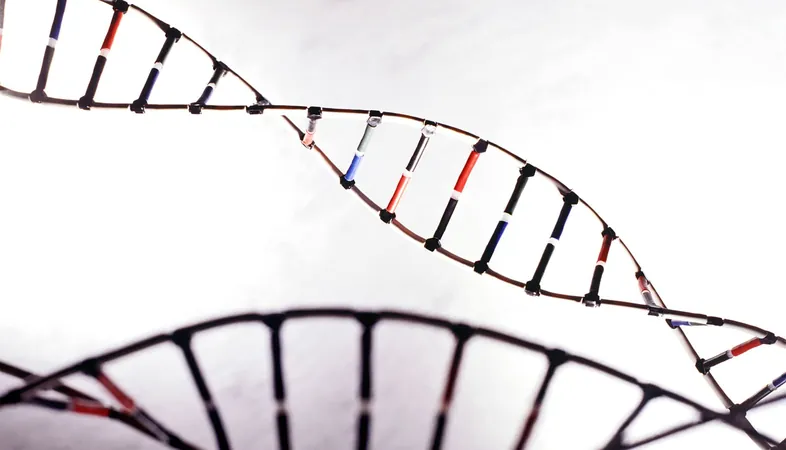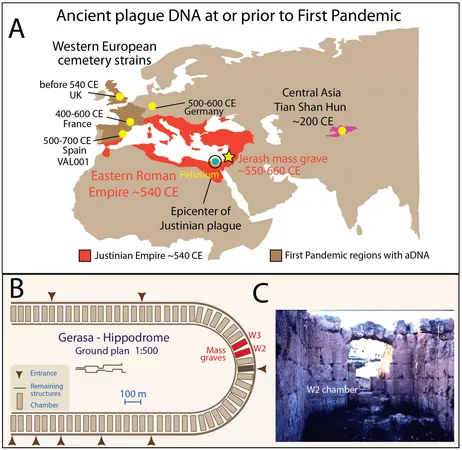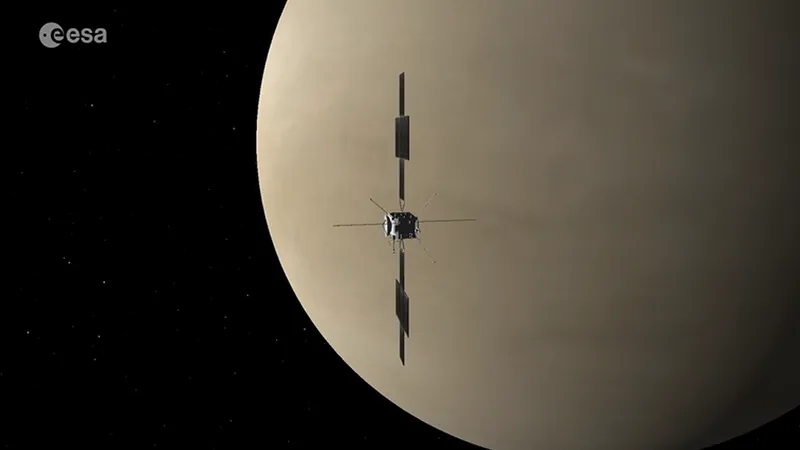
Unlocking Hibernation Superpowers: Could Human DNA Hold the Key?
2025-08-19
Author: Liam
Could Human DNA Unleash Hibernation Superpowers?
Imagine possessing the incredible resilience of hibernating animals, able to survive months without food or water while maintaining muscle mass and even slowing metabolism. Fascinating genetic research suggests that these extraordinary abilities might be lurking in our own DNA.
Understanding the Marvels of Hibernation
Hibernators undergo remarkable transformations—body temperatures drop to near freezing, and brain activity slows as they curl up for a long winter’s nap. Remarkably, upon awakening, they can reverse health issues akin to type 2 diabetes, Alzheimer's disease, and stroke, making them models of metabolic recovery.
Unveiling the Genetic Secrets
Recent studies published in *Science* have unveiled critical insights into how these hibernation abilities work. Researchers identified a gene cluster known as the "fat mass and obesity (FTO) locus" that plays a pivotal role in hibernators' remarkable adaptations. What’s intriguing is that humans also carry these genes, suggesting a shared ancestral connection.
According to Chris Gregg, a neurobiology and genetics professor at the University of Utah Health, this genetic region is the leading risk factor for obesity in humans. However, hibernators leverage the FTO genes differently, enabling them to gain weight before hibernation and utilize their fat reserves efficiently throughout.
Unraveling the Mysteries of Metabolic Control
By pinpointing hibernator-specific DNA sequences that regulate nearby genes, researchers discovered that these sequences act like conductors of a symphony, fine-tuning gene expressions to optimize metabolism. In tests using mice, mutating these specific regions resulted in noticeable changes to weight gain and metabolic rates, emphasizing their importance in energy regulation.
The Gene Hunt: Searching for Hibernation's Hidden Codes
Finding the genetic keys linking to hibernation is no easy feat. Researchers tackled this challenge by employing advanced whole-genome technologies to identify which genetic regions changed in hibernators compared to other mammals. Their hypothesis—that significant alterations in these areas signal crucial adaptations for hibernation—could unlock more answers.
What This Means for Humans
Most changes identified in hibernators suggest a loss of constraints on metabolic flexibility, indicating that while humans may have a 'thermostat' locked to a narrow range of energy use, hibernators enjoy a far broader scope. They can effortlessly recover from muscle atrophy, mitigate age-related decline, and manage drastic weight fluctuations.
A Glimpse into the Future of Medicine
According to the researchers, understanding how these hibernation processes function could pave the way for revolutionary treatments addressing metabolic disorders in humans. By learning to manipulate our genes in a manner akin to hibernators, we might find ourselves better equipped to stave off type 2 diabetes or age-related diseases.
Susan Steinwand, a research scientist at U of U Health, emphasizes that the genetic framework for resilience already exists within us, and it's merely a matter of identifying the right control switches.
As Gregg puts it, "If the answers are hidden in our genome, we might just unlock the pathway to improved health by studying the extraordinary mechanisms of hibernators." This tantalizing research hints at a future where humans could harness the secrets of hibernation for enhanced longevity and wellness.









 Brasil (PT)
Brasil (PT)
 Canada (EN)
Canada (EN)
 Chile (ES)
Chile (ES)
 Česko (CS)
Česko (CS)
 대한민국 (KO)
대한민국 (KO)
 España (ES)
España (ES)
 France (FR)
France (FR)
 Hong Kong (EN)
Hong Kong (EN)
 Italia (IT)
Italia (IT)
 日本 (JA)
日本 (JA)
 Magyarország (HU)
Magyarország (HU)
 Norge (NO)
Norge (NO)
 Polska (PL)
Polska (PL)
 Schweiz (DE)
Schweiz (DE)
 Singapore (EN)
Singapore (EN)
 Sverige (SV)
Sverige (SV)
 Suomi (FI)
Suomi (FI)
 Türkiye (TR)
Türkiye (TR)
 الإمارات العربية المتحدة (AR)
الإمارات العربية المتحدة (AR)